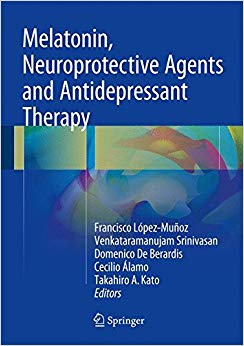
By Francisco López-Muñoz, Venkataramanujam Srinivasan, Domenico de Berardis
Hardcover: 921 pages
Publisher: Springer; 1st ed. 2016 edition (November 18, 2016)
Language: English
ISBN-10: 8132228014
ISBN-13: 978-8132228011
This work is a guidebook for clinicians who are involved in treating depressive patients and also serves the research scientists who are working on the psychopharmacological mechanisms of antidepressant actions and psychopathological mechanisms underlying mood disorders. Mood disorders such as major depressive disorder (MDD), bipolar disorder (BPD) and seasonal affective disorder (SAD) are the most disabling disorders that are among the most expensive of all medical illnesses. The pathophysiology of mood disorders is very complex and involves many mechanisms like circadian rhythm disruption, sleep abnormalities, melatonin rhythm abnormalities and alterations in melatonin receptor mechanisms, abnormalities in monoaminergic neurotransmitter mechanisms, glutamatergic release mechanisms, hippocampal neurogenesis, and abnormal immune and cytokine release mechanisms. Many antidepressants that are in clinical use today including the recently introduced novel agents like agomelatine or other antidepressants cause clinical remission by resynchronizing disrupted circadian rhythms and melatonin receptor functions, enhancing monoaminergic neurotransmission, promoting hippocampal neurogenesis, and regulating immune mechanisms. This book explains various etiological factors that are involved in the pathogenesis of mood disorders and the mechanisms of therapeutic actions of antidepressants including the recently introduced agomelatine and other antidepressants that exhibit rapid onset of action with greater efficacy and fewer side effects. .
Premium Content
Login to buy access to this content.What's Your Reaction?
Excited
0
Happy
0
In Love
0
Not Sure
0
Silly
0

